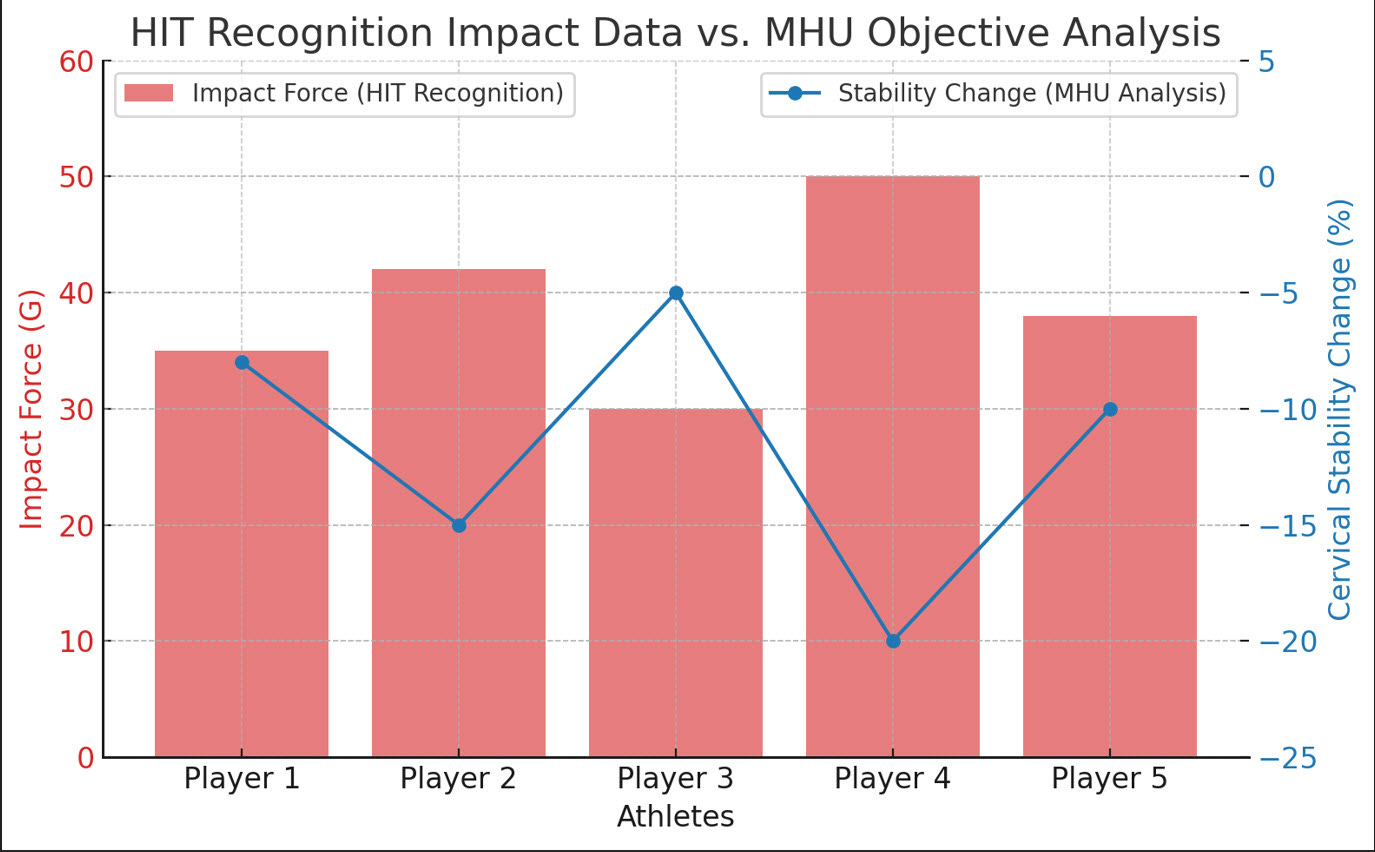In youth ice hockey, the scoreboard tells you who won the game — but it doesn’t tell you the whole story. Behind every slap shot, body check, and scramble in the corner, invisible forces are acting on a young athlete’s spine and brain. At Modern Health U (MHU), we believe those forces shouldn’t be left to guesswork. That’s why we’ve partnered with HIT Recognition to bring science, data, and objective analysis into the conversation about youth athlete safety.
The Challenge: What We Can’t See Hurts the Most
Contact hockey isn’t just about skill; it’s about physics. Each collision sends forces through the cervical spine and into the brain. Over a season, the accumulation of these impacts can influence reaction times, postural control, balance, and cognitive function — sometimes without apparent symptoms.
Traditional injury tracking often misses the subtle, cumulative changes that occur before a concussion or whiplash injury is formally diagnosed. By the time symptoms appear, the damage may have already altered an athlete’s biomechanics or neural processing.
The Solution: A Season-Long Lens on the Brain and Spine
Here’s how our program works:
-
Baseline Testing (Pre-Season)
-
At the start of the season, MHU conducts a forensic-grade, objective spine and brain analysis on each participating athlete.
-
This includes cervical posture, range of motion, muscle activation patterns, and neurological processing metrics — creating a personalized “before” snapshot.
-
-
In-Season Impact Tracking
-
HIT Recognition’s HIT accelerometer is integrated into player helmets.
-
The device measures real-time cervical acceleration and deceleration during impacts — capturing not just the big hits, but also the repetitive micro-impacts that can add up over time.
-
-
Post-Incident Evaluation
-
If an athlete sustains a whiplash or concussion event, MHU performs a post-impact analysis to compare against their baseline.
-
This helps identify changes in neck stability, neuro-muscular control, and cognitive function that might not appear on conventional scans.
-
-
Post-Season Analysis
-
At the end of the season, every player receives another objective analysis.
-
We compare pre- and post-season data to see how a year of contact play has affected their brain and spine health — whether or not they had a diagnosed injury.
-
Why This Matters
This approach lets us:
-
Detect early changes in brain and spine health before symptoms escalate.
-
Guide return-to-play decisions with objective, data-driven evidence.
-
Build a long-term dataset to understand the real effects of contact sports on developing athletes.
-
Give parents, coaches, and medical providers the information they need to protect young players without unnecessarily pulling them out.
Our ultimate goal is not to take contact out of hockey, but to make sure every player’s career is supported by science, transparency, and proactive care.

The Bigger Picture
The combination of MHU’s advanced diagnostic analytics and HIT Recognition’s impact-tracking technology creates a feedback loop for safety and performance:
-
The accelerometer shows what happened in real time.
-
Our spine/brain diagnostics show how it affected the athlete.
This partnership has the potential to redefine sports medicine for youth contact sports — moving from reactive treatment to preventive, personalized monitoring.
If you’re a parent, coach, or league interested in bringing this program to your team, reach out to Modern Health U. The game will still be just as fast. The hits will still be just as hard. But we’ll finally know what’s happening under the helmet.
